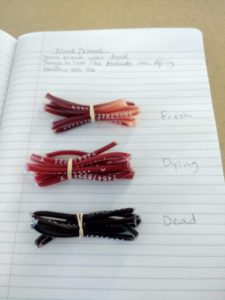Life is insane and so am I, but I’d be remiss if I didn’t talk at least a little bit about my experience at this year’s Fyrecon.
Though the venue was a little bit more disorganized than last year it was over all a great experience. There were several interesting classes and panels and I wished I had a time turner so I could go to multiple classes at the same time, but I think I chose fairly well.
Last year when I went to Fyrecon I was mainly focusing on learning more of the business end of writing so this year I thought I’d concentrate on the writing side of writing and learning more about subject materials that might come handy in my writing.
Probably my favorite classes this go round were Bob Defendi’s class on plotting a story, where we as a class came up with an outline for a story; How do I wreck this? where a longtime mechanic and truck driver taught us how to sabotage vehicles, the plausibility of cars maintaining drive-ability after receiving damage to various parts and what you can and can’t do to big rigs, airplanes and other aircraft; and finally the class about blood which deserves its own paragraph.
Ah, yes, you heard right, I went to a class about blood. Our instructor writes vampire books and currently works as the supervisor of a blood bank. We discussed blood types, the history of blood transfusions and blood letting (did you know they used to use animal blood for transfusions? Horrifying but true, also a source of belief in human animal hybrid creatures), the RH factor (whether your blood is negative or positive) and basic mechanics like: how long does it take an average sized human to bleed out? How much blood is in the human body? (The average adult has somewhere between a gallon and a gallon and a half of blood) What’s the difference between a splatter, a smear and spatter of blood (actually the spatter/splatter thing is still a bit hazy). She also brought samples of blood that had been harvested at different times so of course I took a picture. (You’re Welcome).

As you can see in the photo, the top sample is fresh blood that was harvested very recently, the second sample is blood that is dying looks like Koolaide or ketchup this happens when blood has been sitting around for a few months, the final sample is blood that is no longer viable, all the cells are dead and the blood turns black. I thought that was interesting since I’ve always known that technically blood is a living thing but I never really considered it as being able to die. Dry out sure, but die and turn black? Interesting and disgusting.
I had many other adventures at the conference, including the joy of finding a fascinating little Asian market/ Korean restaurant that serves El Salvadorian papusas, (strange combination but they were actually pretty good papusas, though I was sad I didn’t find any Tunkatsu sauce in the market side), but those stories will have to wait for another day.
Happy writing!
